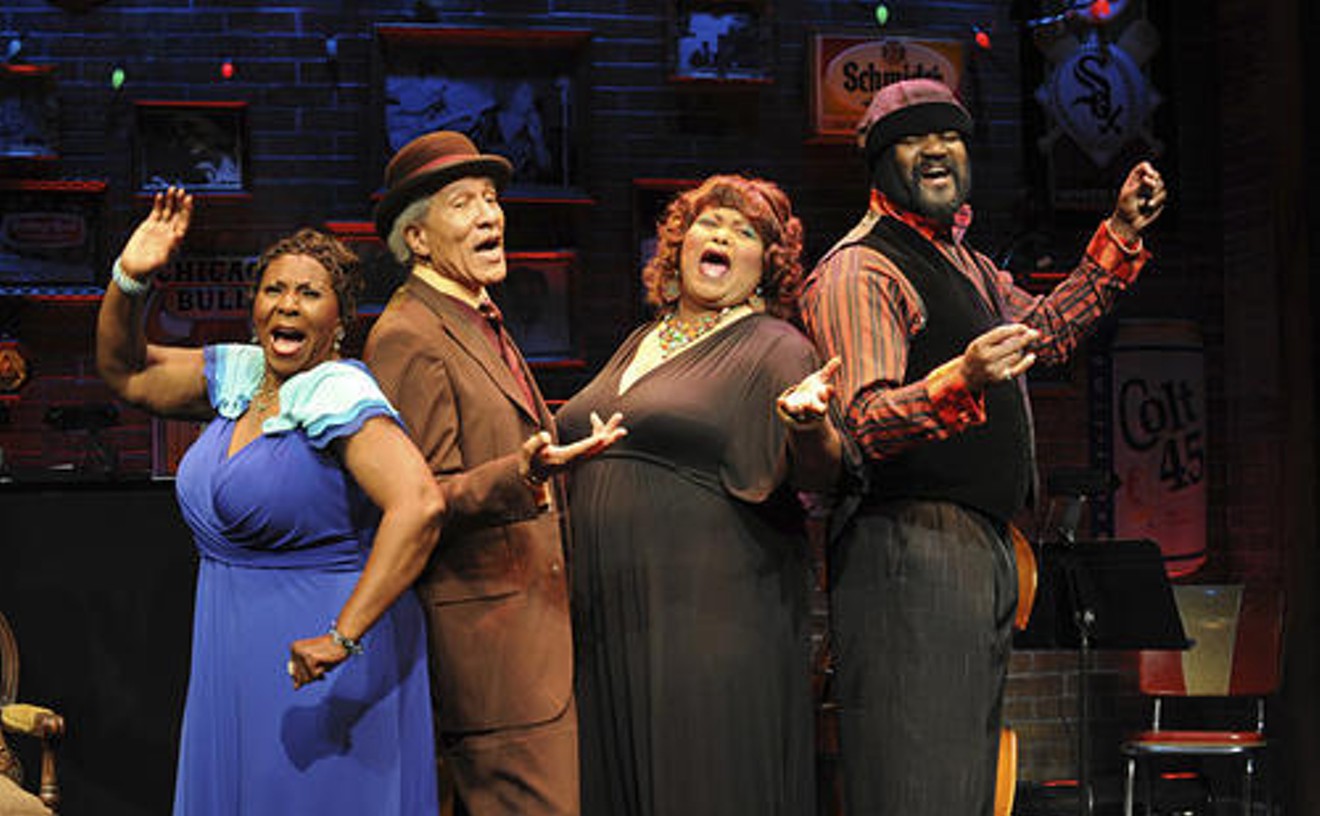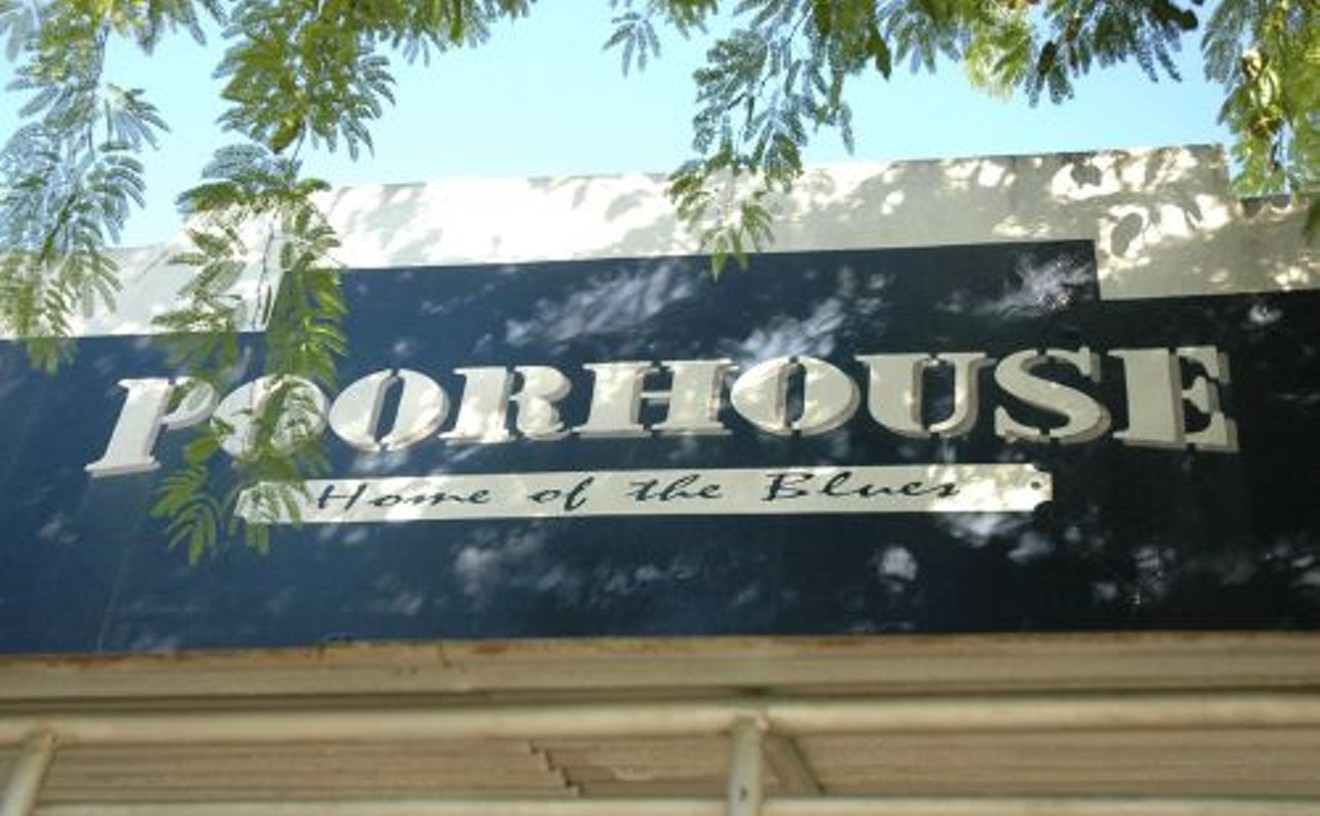Best Stage Design
Rich Simone
This past season, every time a set caught the eye as aesthetically pleasing or clever, it was inevitably one of Rich Simone's creations. Simone's sets always seem to help bridge the gap between the audience and the actors, using the stage not only as a meeting point but also as a point of departure. Most recently his specialty seemed to be setting the mood for licentiousness, adultery, and other forms of sexual high jinks, as he did in Things We Do for Love and The Real Thing. In Things We Do for Love Simone created a three-story home perfect for the bawdy upstairs-downstairs humor that British playwright Alan Ayckbourn had in mind when he wrote this farce about a nymphomaniac, a soon-to-be spinster, a drunkard, and a vegetarian. Tom Stoppard's The Real Thing had a more sophisticated design (clean lines and streamlined contemporary furnishings) for this more erudite group of lovers (also British, come to think of it). Simone cleverly made use of upstage space to depict the playwright's play within a play. You could say he has a Thing for stage design.
Best Strip Joint
Booby Trap

So let's say Goldilocks has come to South Florida to find the strip joint that is juuuuust right. And say, for this issue of New Times, that little Goldy is a hetero guy. She looks for a club that's neither sleazy nor overly pretentious, a place where ham-fisted security goons aren't watching your every move. Our fairy-tale voyeur would feel quite comfy at Booby Trap, where the atmosphere is more discotheque than roadhouse. Variety is the name of the game at Booby Trap; dancers have been pulled from the ranks of amateurs, local pros, and porn stars. On a recent Wednesday night, a steady stream of entertainers showed up for work at the club sporting ponytails and workout suits, transformed themselves backstage, then wriggled and disrobed through several songs. After completing their sets, they mingled and chatted with patrons. A statuesque brunette was offered a lengthy neck-and-shoulder rub by one happy customer. Adult film star Harmony Grant jiggled her stuff during three sets. Frugal oglers will be happy to know that the cover charge is a mere $5 and the only pressure to keep buying drinks is the pounding of your heart.
- 2840 Hammondville Rd., Pompano Beach, 33069 Map
- 954-973-6888
- www.myboobytrap.com
Best Supporting Actor
Ray Lockhart
This year Ray Lockhart proved that you can trick the devil, but you can't fool an audience. As Lem, the man who murdered musician Robert Johnson, Lockhart was not only pivotal to the play's denouement but also essential to the emotional chemistry on-stage. Portraying a long-absent and embittered husband, Lockhart filled M Ensemble's tiny set with the emotional intensity and stage presence of a man who has spent the past few years splitting rocks and returns to find his wife bedding down with a handsome, mysterious stranger. Lockhart's raw physicality and confident stage presence elevated the quality of this drama immensely without overshadowing the rest of the cast. Finding the balance between rage and passion, his quarry worker turned out to be the gem in this bitter tragedy.
Best Supporting Actress
Tanya Bravo
To succeed in a supporting role, an actress must know her part within the context of the play as well as she knows the character she plays, and Tanya Bravo is one local actress who accomplishes this feat so consistently that her presence on the cast list always ensures an enigmatic evening of drama. She possesses the intensity and stage presence of an actress who always inhabits her character -- be it a punked-out band groupie in Caldwell Theatre's As Bees in Honey Drown, the young-girl version of Ruth in New Theatre's The Book of Ruth, or more recently as Chrysothemis in New Theatre's Electra. As the practical but ultimately vulnerable sister of Electra, Bravo showed her ability to channel conflicting emotions in relatively limited speaking parts. Her control and sharp instinct guarantee that her performance is never diminished by the size of the role she plays.
Best Theater for Plays
Florida Stage

Besides delivering first-rate performances, Florida Stage artistic director Louis Tyrrell this season struck the right chord with music lovers and theatergoers alike. His productions of Syncopation, The Music Lesson, and The Devil's Music: The Life and Blues of Bessie Smith proved theater can sing, dance, wail, and waltz. Syncopation, the story of two immigrants in 1911, underscored the basic human need to dance and hear music. As the characters awkwardly stumbled through the waltz and fox trot, they became more human. The Music Lesson transformed classical music classes into moving instruction on life and loss. The Devil's Music was a closely woven tapestry of the blues great Smith's music and harrowing life. Actress Miche Braden gave the role the electrifying singing voice and powerful stage presence it warrants. All three shows enlivened good theater with impressive, live, musical accompaniment. In each piece melody became an integral part of the cast as well as a vibrant and multifaceted vehicle for the excellent drama Florida Stage continues to produce.
- 262 S. Ocean Blvd., Lake Worth, 33462 Map
- 561-585-3433
- www.floridastage.org
Best Venue for Live Music
The Poor House

The bare-wood, dimly lit, rustic interior of the Poor House is a stark contrast to the majority of nightlife locales around downtown Fort Lauderdale's Himmarshee Village. Likewise, denizens of the Poor House are likely to be locals hoping to groove to live, original music (from the likes of Hashbrown, Plutonium Pie, Mr. Entertainment, or the Hep Cat Boo Daddies) rather than the canned dance fare booming from its neighbors. Here you'll rub up against a velvet Elvis, not velvet ropes. The suds selection is also top-drawer. During the steamy summer months, quaff a tall Tucher studded with a lemon slice. When it's cool outside grab an Amber Bock or a nutty Newcastle. The barkeeps are amateur comedians, which adds to the fun. The music's loud enough that you can hear every note, indoors or out. And you can get close enough to the performers to see the whites (or at least reds) of their eyes. If you're put off by the chi-chi crowds prowling the downtown streets on weekends, dip into the Poor House -- it feels normal in here. And is that so wrong?
- 110 SW Third Ave., Fort Lauderdale, 33312 Map
- 954-522-5145
- www.poorhousebar.com
Best Venue for National Acts
Broward Center for the Performing Arts

Keith Douglas
If you live in or around the "Venice of America" that is Fort Lauderdale and don't have a boat -- or even that much more economical option, a friend with a boat -- try attending an event at the Broward Center for the Performing Arts. Architect Benjamin Thompson designed the Au-Rene Theater to replicate the experience of being on an ocean liner. He perched it on a hill overlooking the New River and pointing toward the Atlantic, curved the structure and filled in the front with a stories-high wall of glass to resemble the prow of a ship, and finished the theater's ceilings and balustrades in lapstrake cypress. The blue-and-green waves in the carpeting underfoot add to the sensation of being on the bounding main. Oh, did we mention that the acoustics are perfect? Or that there's not a compromised sightline in the auditorium? Or that the venue offers the crème de la crème of national acts from the symphony to the Broadway musical to the Grammy Award winner? No? Silly us.
- 201 SW Fifth Ave., Fort Lauderdale, 33312 Map
- 954-462-0222
- browardcenter.org
Best Act to Leave in the Past 12 Months
Chris Chandler
He was just passing through, never staying in one place more than a year. We knew that, but it's still hard to admit that's he's really gone -- with no forwarding address. That's probably why we feel a little like a jilted lover. The good news is, Chris Chandler liked us. He really, really liked us. He wrote about the area in an e-mail to his South Florida friends, "I like to think of Hollywood as pre-scene'.... The rent is cheap, there are a dozen places to hear affordable live music where the beer is cheap, and there are no A&R reps shaking the bushes to find Eminem taking a leak." High praise indeed. And of course, audiences who heard Chandler perform know this "folken-word" poet was just warming up his praise when he typed that missive. We'll miss the guy who pointed out poetically that the coldest place on earth is a South Florida movie theater, that karaoke-style, cover-tune-like guitar-strumming is crap, and that many of our residents look like George W. Bush when he's asked a simple question (which goes a long way toward explaining the election). Let's hope we do something really stupid that attracts national attention soon so Chandler comes back for a visit.
Best Actor
Paul Tei
Theatergoers found a lot of reasons to dislike Paul Tei this season. He played a cold-blooded child-murderer in New Theatre's Never the Sinner and a hot-blooded serial killer in GableStage's Popcorn. But he is so good at being bad that we can't really hold it against him. Tei is the kind of actor who looks at a role not only as an opportunity to perform but also as a chance to create a persona. Consequently he can portray several different degenerates without his performances overlapping. As Wayne, the gun-toting redneck in Popcorn, Tei kept us riveted to our seats -- appalled and laughing. But as Richard Loeb, a wealthy young Chicago man who, along with his lover, kills a young boy on a Nietzsche-inspired whim, he was outstandingly appalling. Tei never let audiences simply dislike his character. With his willingness to take risks and push the boundaries of character definition, he could make Ted Bundy funny. He dared to play the insolent, arrogant murderer Loeb as childlike and capricious -- clubbing a kid in the head one moment and going out for hot dogs the next. Tei's topnotch acting transformed these two good plays into excellent ones.
Best Actress
Bridget Connors
An actress's success in a dramatic role can fall into one of two categories: the ability to make the unbelievable believable, and the ability to make the believable unbelievably incredible. Bridget Connors managed to do both in her role as a young Jewish woman dying of a terminal illness. That's the believable part. Rachel's plight could easily have been a case study in Harold S. Kushner's book When Bad Things Happen to Good People. She expressed all the predictable emotions and asked all the right metaphysical questions. The not-so-believable part is the conversion experience she had, which was facilitated by her sister, a devout member of the Christian Science faith. Believable or unbelievable, Connors brought something magical to the role from the moment she stepped on-stage. Her ability to be simultaneously earthy and ethereal left theatergoers feeling as if they were seeing a tragedy for the first time.





